Cold climate gardening can take a bit more preparation and thought than it does at southern latitudes. There are many skills and general abilities that can contribute to the success of subarctic gardening.
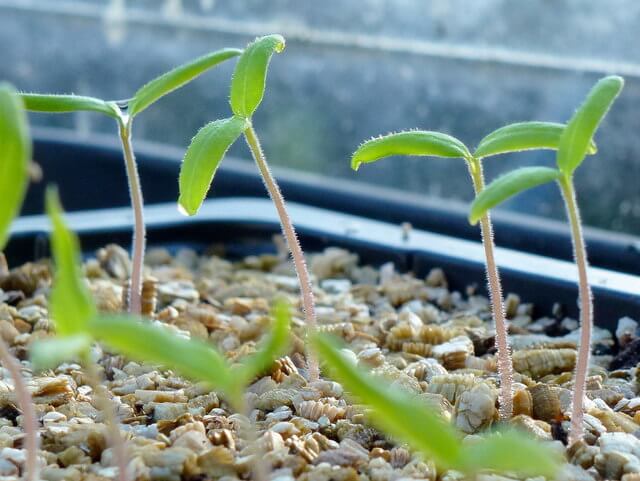
Here we offer ten of our top semi-advanced cold weather gardening tips that can help you extend the season and have a successful harvest.
Using these tips will ensure you can grow a successful garden anywhere, even in the subarctic!
Track Your Weather, Especially In The Shoulder Season
For most gardeners, they can be relatively care free about the weather over the primary growing season. During the shoulder seasons, however, you should be paying much closer attention to the weather than you usually do.
If you are careful, prior to last frost, there are usually many days suitable to growing plants. You can often have your garden starts outside during these days. This can often be 4 to 6 weeks prior to last frost in many seasons!
However, low night temperatures can have the risk of bringing about frost. When frost settles on your plants, it can be disastrous in many cases. For some plants, such as peppers, it can permanently harm them and possibly cause them to die.
The risk of a potential frost is highest when temperatures get around 36 degrees and below. Most plants really don’t like temperatures in the 30’s anyway, but frost is the real killer.
Knowing when to bring your plants inside and when you can leave them out is a vital skill in gardening.
If you’re able to pay attention, you can get free outdoor growing energy even during times where frosts are likely to occur.
Extend Your Season With Frost Tolerant Plants
There are many types of plants that are frost tolerant, even some that improve their flavor with a bit of frost!
These are great for early and late season options that can extend your gardening season outside of the typical frost boundaries.
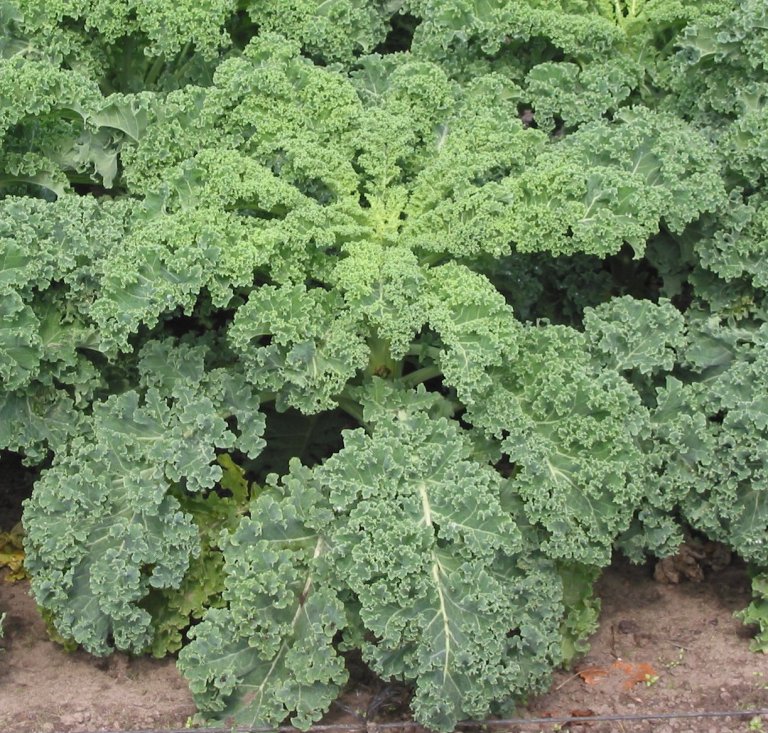
Common frost tolerant vegetables include sweet peas, broccoli, cabbage, and cauliflower. Root vegetables are also a great choice with carrots, onions, turnips and parsnips offering a bit of early and late season survival.
Some cold tolerant veggies grow very fast and make great second crop harvests. Radish, leaf lettuce, arugula, and mustard greens can be planted in 2-4 weeks prior to first frost, resulting in bonus post-frost harvests!
There are some vegetables that improve with frost, such as spinach, kale, carrots, collard greens, Swiss chard and endive. These are excellent candidates to bring into fall’s cooler temperatures.
Mature rhubarb will often survive extremely hardy winters and be the first to produce in the subarctic garden, offering a nice early season garden treat.
Harvest Your Garden According To Weather Conditions
The late gardening season is always a bit challenging as it can often be hard to predict exactly when the first frost will set in.
While first and last frost dates are commonly known for various areas, mother nature doesn’t follow a schedule. Frosts can come early or late.
It’s helpful to prioritize your harvests according to the plant’s tolerance for cooler or warmer temperatures.

For all frost sensitive plants, you should work towards harvesting them before first frost. These plants are always the first priority for harvest.
Many plants will tolerate cooler temperatures, and even a light frost. You can hold off on harvesting these types of plants, taking full advantage of the late gardening season.
Just remember in the late season, winter is coming. It’s unavoidable. Keep an eye on the prize and harvest that garden before winter sets in!
Have Frost Cloth On Hand For Frost Emergencies
Frost cloth, also called remay cloth, is a technique that can be used to protect your garden from frosts.
Frost cloth is one of those “better to have it and not need it, than to need it and not have it” things when it comes to gardening. Also “better to have more than you need than not enough.”
It can be used in the early season, especially if an unexpected late frost occurs and your garden is in the ground. Simply cover your plants and they will be exponentially more likely to survive that frost.
In some years, we’ve seen snowfall well past last frost. Having frost cloth on hand is insurance for protecting your garden!
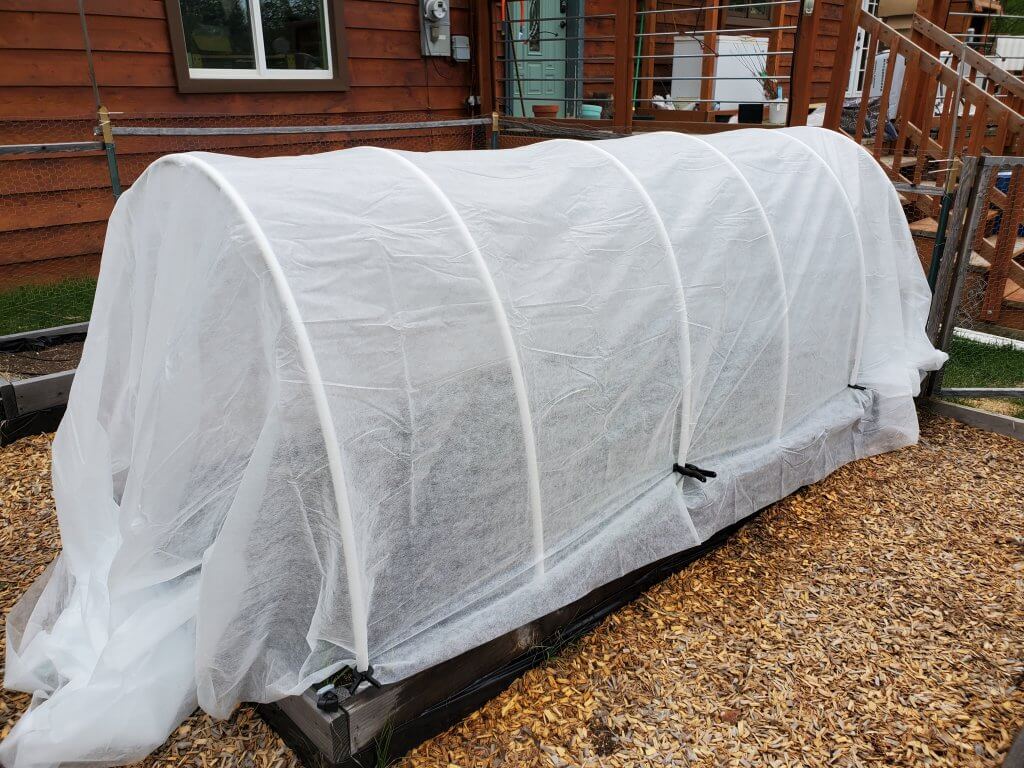
In the late season, the weather isn’t just going to change to winter one day.
First frost is just the first time frost reveals itself, but there are plenty more good garden days that can be had at that point.
Frost cloth can also extend the season for those frost sensitive plants, protecting them from the first few frosts. You can easily get a fair bit more season than you normally would by doing so.
Use Cold Frames, Hoophouses Or Greenhouses
While this seems to be a luxury for many gardeners, it’s often not all that expensive to built climate controlling systems into existing gardens.
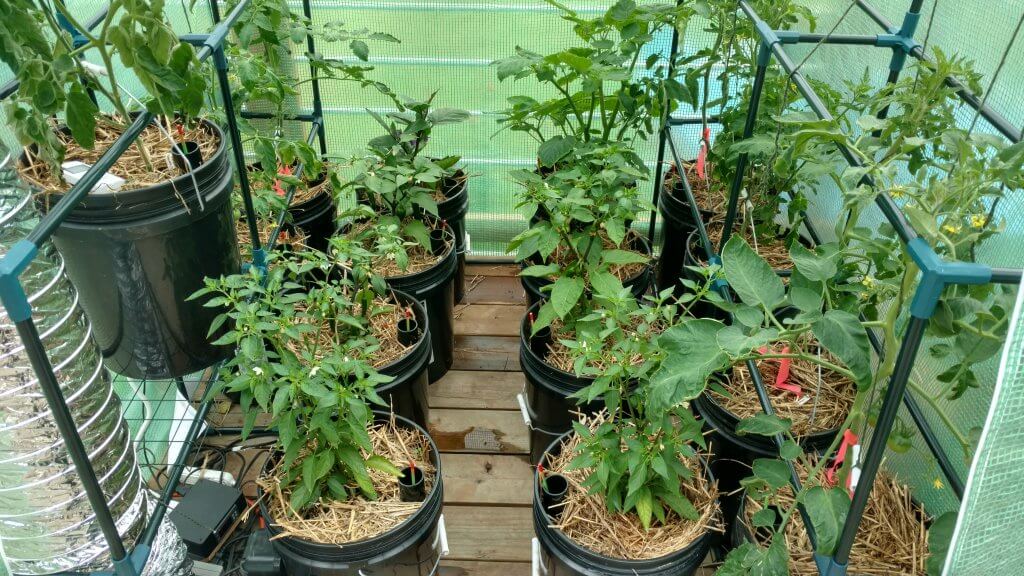
Maybe you all ready have raised beds? It’s a fairly inexpensive project to add a hoop house to them. It can be done from fairly inexpensive materials, including PVC and greenhouse plastic. You can even build hinged hoophouses that give you easy access to your protected garden.
Cold frames are also something that can be helpful. Cold frames are typically small raised beds, built from a bit of lumber and an old window. The bed is built to the window’s dimensions and then the window placed over the bed. Many crafters will put the window on a hinge, allowing for easy opening.
Building a climate controlled greenhouse was the best thing we’ve done for our efforts in cold climate gardening. It’s not the cheapest option in season extension, but is also the most helpful.
Pursuing means of climate protection can extend your season by matters of weeks on both sides of the season. Combined, that’s a month of additional growing season!
It makes a difference.
Use Varieties That Do Well In Cold Climates
Cold climate crops will excel when grown in the subarctic. The tendency towards cool summers in the subarctic offer a huge advantage for those colder climate plants.
Warm climate crops, like tomatoes, cucumbers and peppers, are a lot more finicky.
These often need extended periods of warmer temperatures overnight to allow flowering, which is the basis of fruit creation. Different seed and plant genetics may respond differently when exposed to cooler conditions.
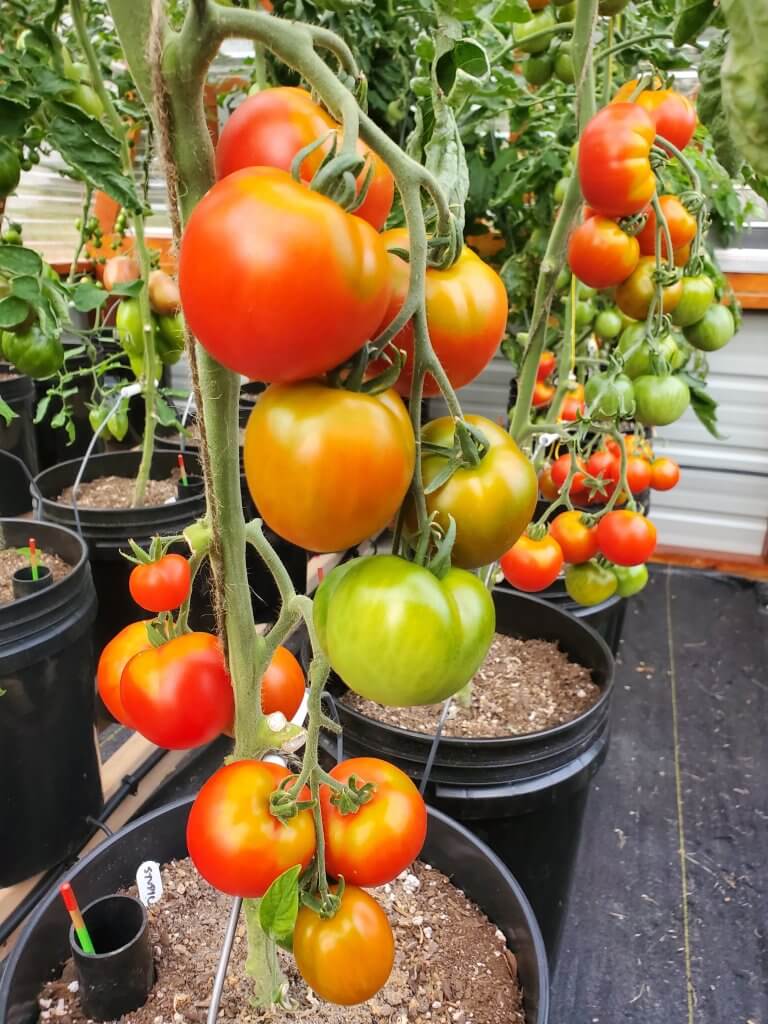
When growing these types of plants, using varieties that are known to fruit and flower with lower temperatures is very important.
In particular, this affects plants like cucumbers, tomatoes, squash, peppers and a few others.
It may be desirable to seek out specific seed suppliers that offer varieties that are geared towards cooler climates. Seed sellers in your region are likely a safe bet, but not all vendors curate their selections well.
Unfortunately, there’s not some giant database with this information, so it is a bit of trail & error. Community extension services often document some as well as resources like our website. Fellow gardeners also often have inherent knowledge, too, so pick their brain!
Use Raised Beds To Keep Soil Warmer, Wisely
Raised beds are known to increase soil temperatures by a fair bit, which can really benefit a lot of plants.
Typically, most raised beds are created from dimensional lumber, which can be quite costly. Thus, they should largely be used for plants that will benefit from the increased soil temperatures.
We try to maximize the food production in our raised beds for foods that can be planted intensively. This maximizes our output from the comparatively more expensive growing space.
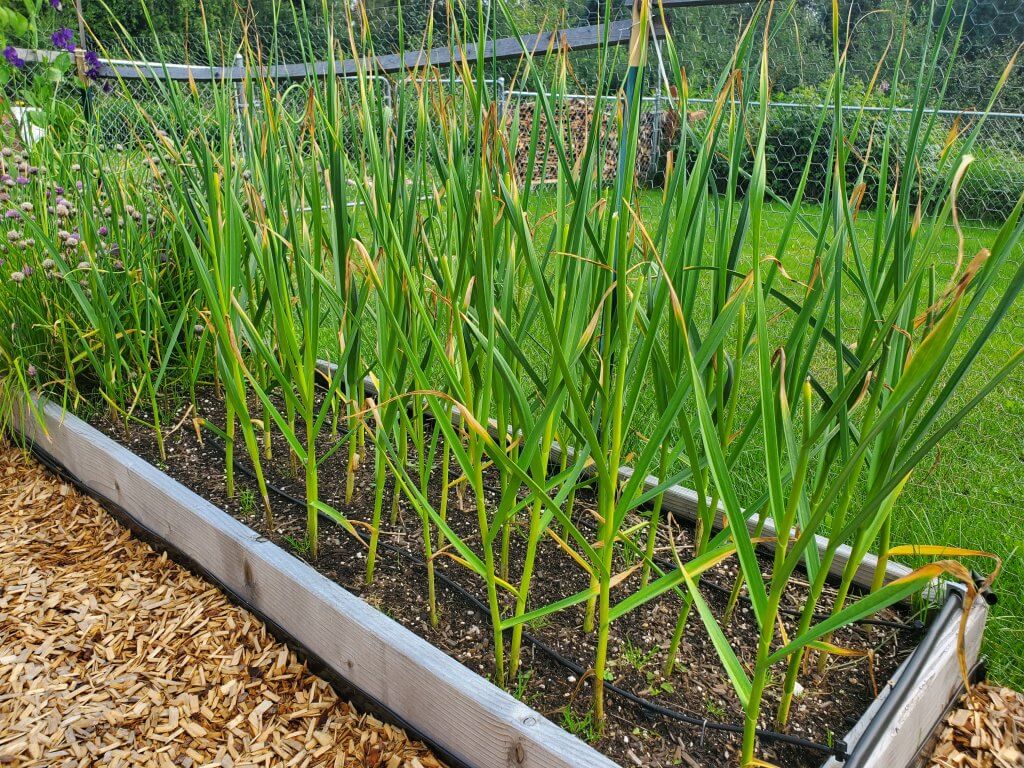
Also, raised beds don’t necessarily have to be enclosed in wood. They can be simply built from the ground itself, using the wide-raised-row technique.
Raised beds allow the sun to warm the side of the soil, which can keep the soil well above the ambient temperature of the ground.
In the subarctic, it’s beneficial to align your rows east to west so the exposed face can be warmed by the southern exposure.
Build A Container Garden
Similar to raised beds, a container garden is extremely flexible and offers warmer soil temperatures than baren ground techniques.
One of the best advantages about container gardens is you can grow plants anywhere. We use our containers on our deck, which coincidentally provides a very natural protection from moose and rabbit.
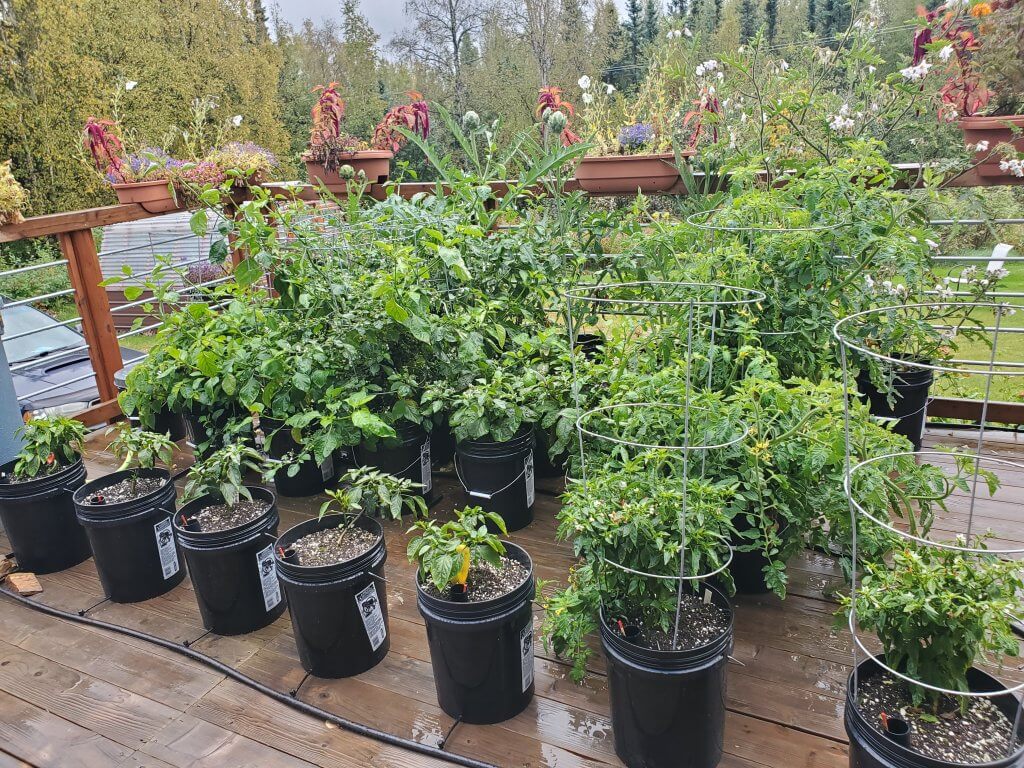
The most important thing with container gardens is to ensure that the container size is large enough that the plants won’t dry out too quickly. It’s often better to slightly oversize a container than to under size it.
We suggest 5 gallon containers as a starting point, but larger containers can support larger plants with less drought conditions.
The container gardening concept has major advantages in subarctic growing, enough that it has become one of our core techniques.
Also, It can be somewhat costly to fill many containers with soil, so making your own soil with compost, top soil, sand, perlite, vermiculite, peat moss and/or coco coir can be a cost saving opportunity.
Invest Into A Good Indoor Plant Grow Room
If you intend to grow your garden from seed in cold climates, it is necessary to start your garden from seed indoors.
If there’s one thing we can communicate, it is to take a step back before you start spending any money and look at your overall gardening needs.
We recommend doing some initial research, learn about what it takes. More importantly, frame your expectations appropriately. It’s one thing to grow 30 plants, it’s another entirely to grow several hundred.
The issue new gardeners face is that they don’t necessarily understand what their needs are. We’re here to tell you, it’s more than you think. You start with an initial expectation, but the reality is quite a bit different.
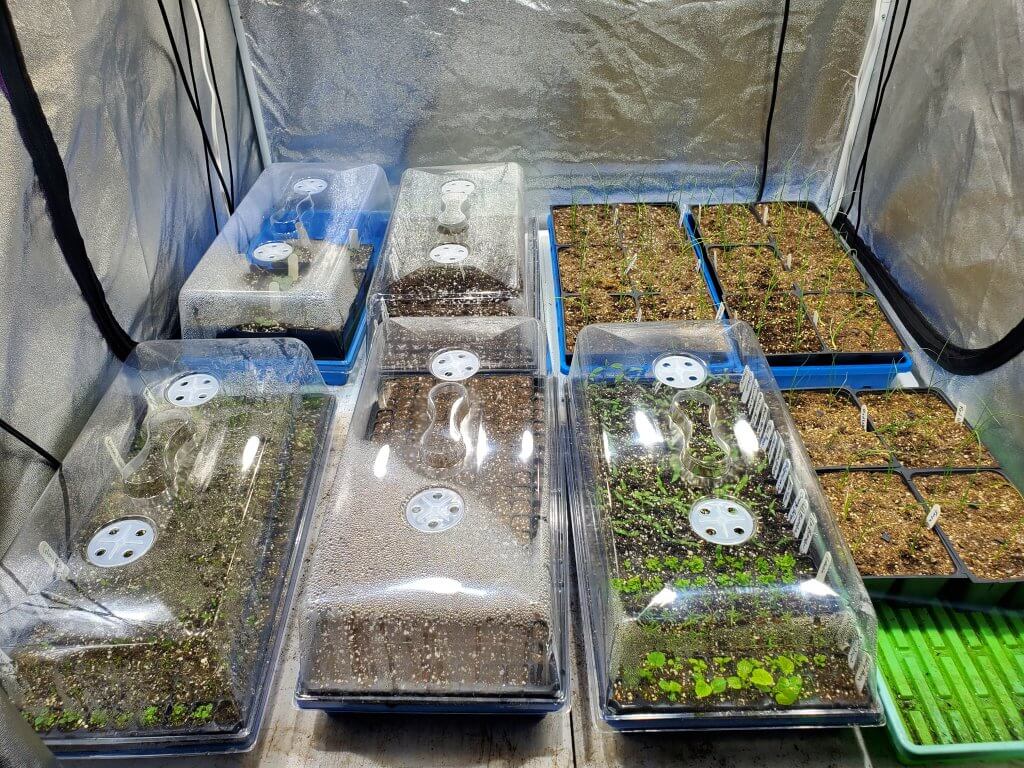
We’ve seen many new gardeners go out with the expectation that they are raising seedlings, only to surprisingly realize that they are actually raising plants.
Plant After Last Frost Dates
In the spring, the weather can often be unpredictable and will change on a daily or hourly basis.
Spring is often deceptive, offering a “fool’s spring” most years. It literally tricks you into thinking summer is here. And then, BAM. Snowfall or deep cold temperatures.
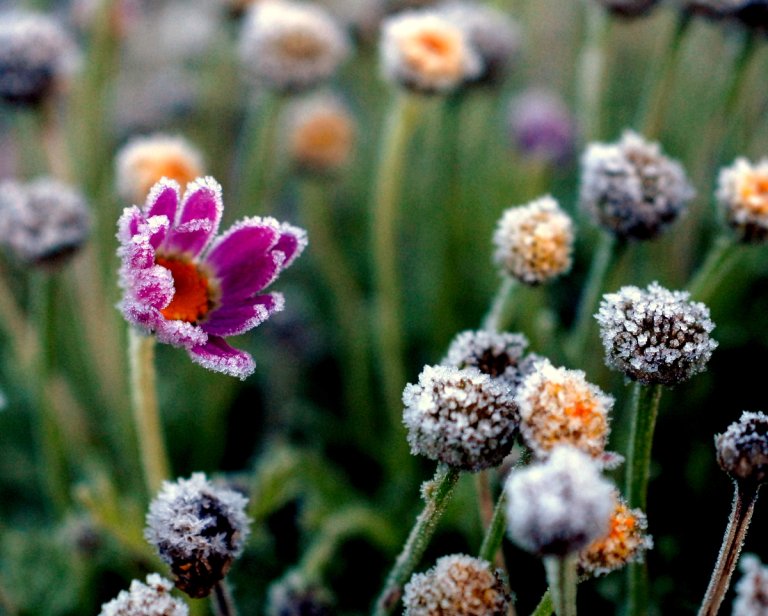
If you want to ensure the success of your garden, wait until after your known last frost date to plant everything. Particularly any plants that are not frost tolerant. If you don’t know what that means, then definitely wait for last frost.
While in some seasons you can cheat and get ahead with an early planting, it’s also quite possible that an unexpected frost could set in and destroy your early plants.
There is little skill to it, only chance.
At least in the subarctic, pushing the limits requires a lot of flexibility, plant specific knowledge and general testing of theories.
If you want to experiment, that’s fine. We do that too! Just understand, you can lose everything. The experts are going to tell you to wait for last frost before planting.
That’s All We Wrote!

Having a good time? We have an ever growing list of insightful and helpful subarctic & cold climate gardening articles, waiting out there for you!
- Cold Climate Gardening Basics 👉
- Growing Your Garden From Seed Indoors 👉
- Advanced Cold Climate Gardening Techniques 👉
- Plant Specific Cold Climate Growing Guides 👉
- Subarctic Perennial Food Forests & Foraging 👉
- Indoor Garden Lighting & Grow Rooms 👉
- Greenhouses & Temperature Control 👉
- Harvesting & Food Preservation 👉
- Solving Cold Climate Garden Problems 👉
- 1 Minute Reads On Tons Of Garden Topics 👉
FrostyGarden.com is 100% ad-free and we do not use affiliate links! This resource is voluntarily supported by our readers. (Like YOU!) If we provided you value, would you consider supporting us?
